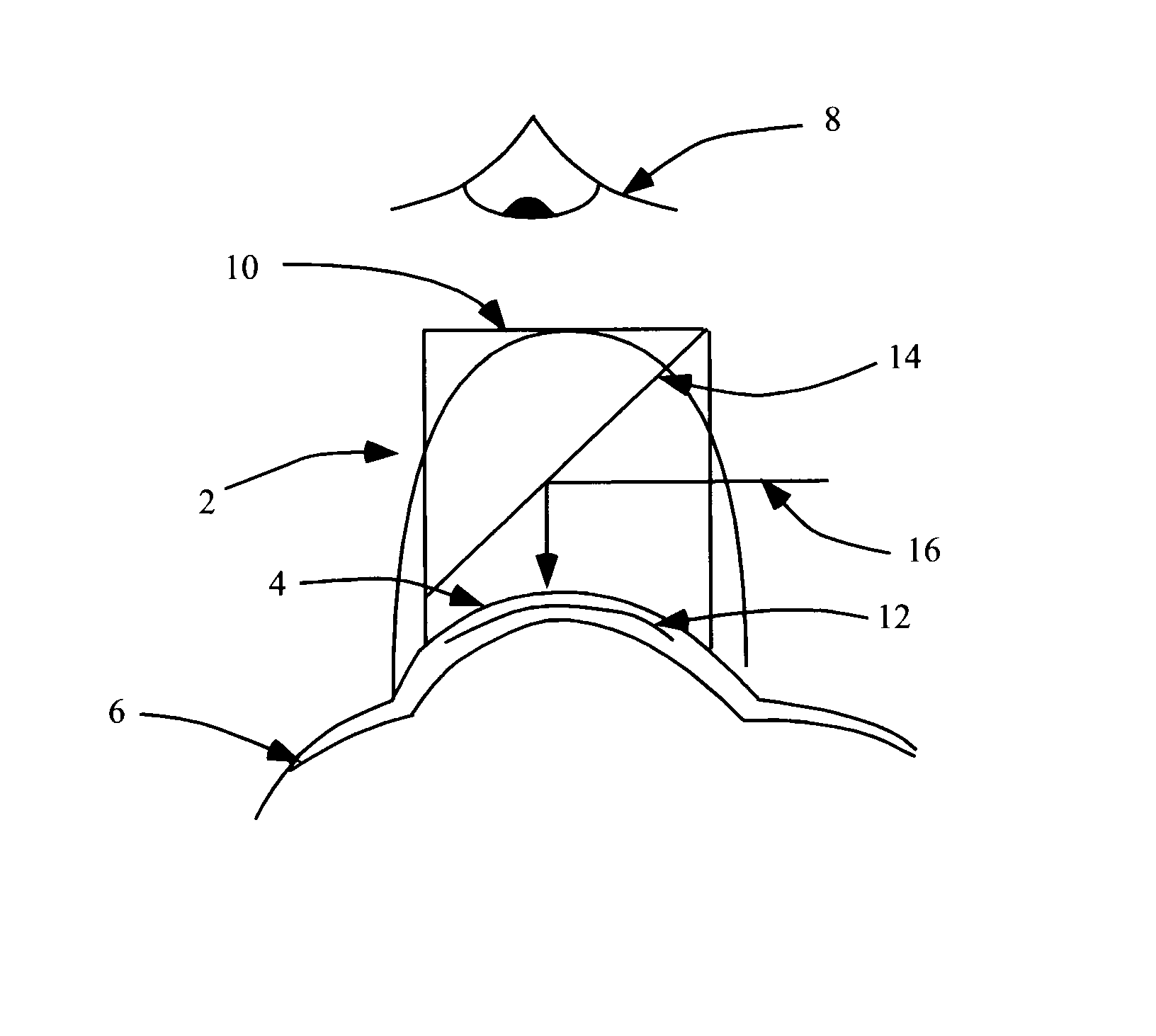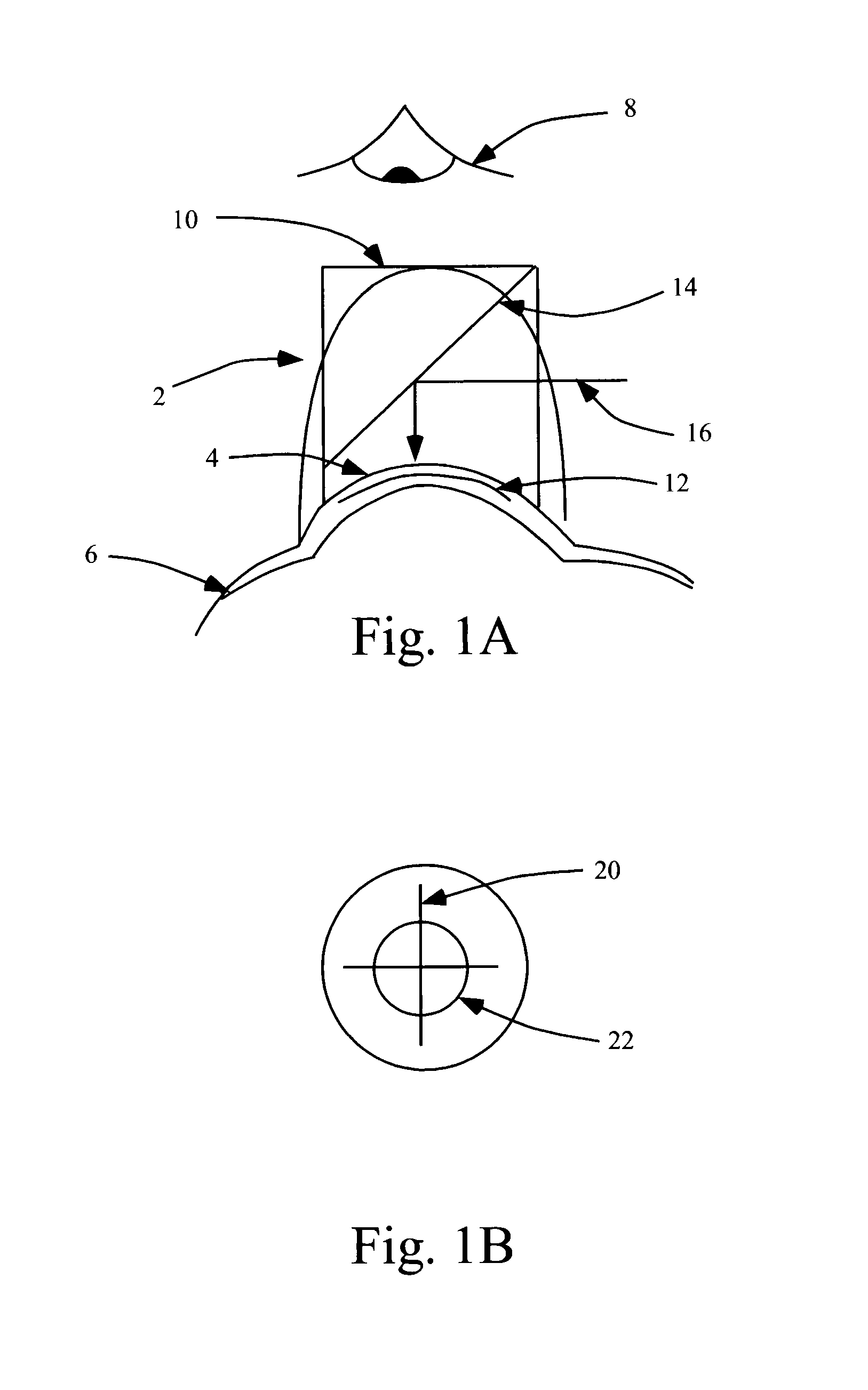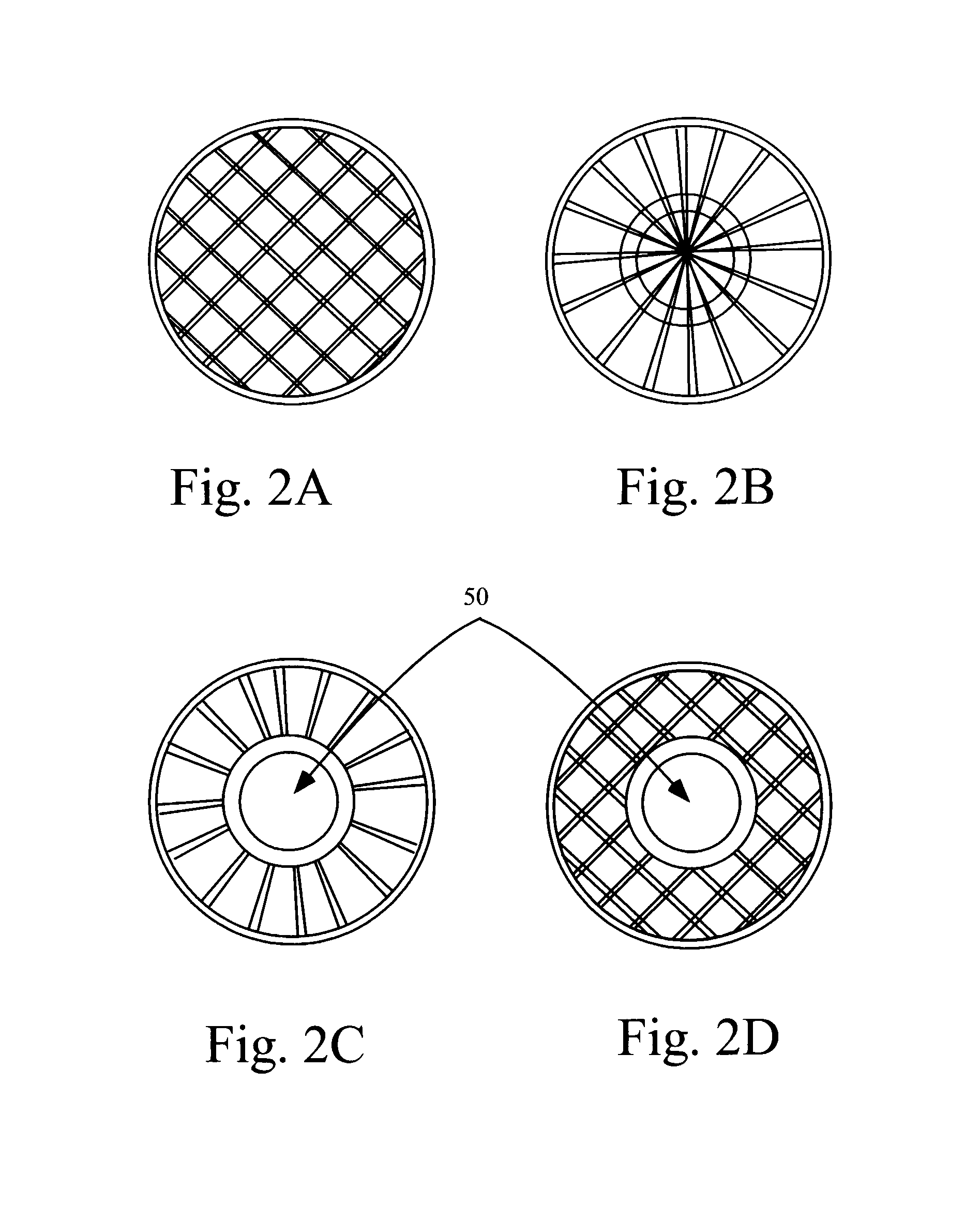Intrastromal refractive surgery by inducing shape change of the cornea
a corneal shape and induction technology, applied in the field of inducing a corneal shape change, can solve the problems of high distortion, difficult treatment, and inability to achieve optimal vision
- Summary
- Abstract
- Description
- Claims
- Application Information
AI Technical Summary
Benefits of technology
Problems solved by technology
Method used
Image
Examples
Embodiment Construction
[0039]A technique is provided for inducing a shape change of a cornea, particularly in the region of a cone or a bulging in Keratoconus eyes.
[0040]A further technique is provided for changing a curvature of an anterior surface of the cornea to cause a correction of a refractive error, such as myopia, hyperopia and / or astigmatism.
[0041]Another technique is provided for wavefront correction of a high order aberration of an eye. The high order may be defined as a third or higher order Zernike polynomial of the aberration.
[0042]Curing light and UV light are generally used interchangeably in the description that follows, with the understanding that curing light may have other wavelengths than UV. That is, curing light may include part or all of the UV spectrum, and may include wavelengths other than UV that are suitable for curing particular materials.
[0043]Low Trauma Surgery Using an Intrastromal Pocket
[0044]An intrastromal pocket is created in the stromal layer of the eye. An intrastro...
PUM
 Login to View More
Login to View More Abstract
Description
Claims
Application Information
 Login to View More
Login to View More - R&D
- Intellectual Property
- Life Sciences
- Materials
- Tech Scout
- Unparalleled Data Quality
- Higher Quality Content
- 60% Fewer Hallucinations
Browse by: Latest US Patents, China's latest patents, Technical Efficacy Thesaurus, Application Domain, Technology Topic, Popular Technical Reports.
© 2025 PatSnap. All rights reserved.Legal|Privacy policy|Modern Slavery Act Transparency Statement|Sitemap|About US| Contact US: help@patsnap.com



